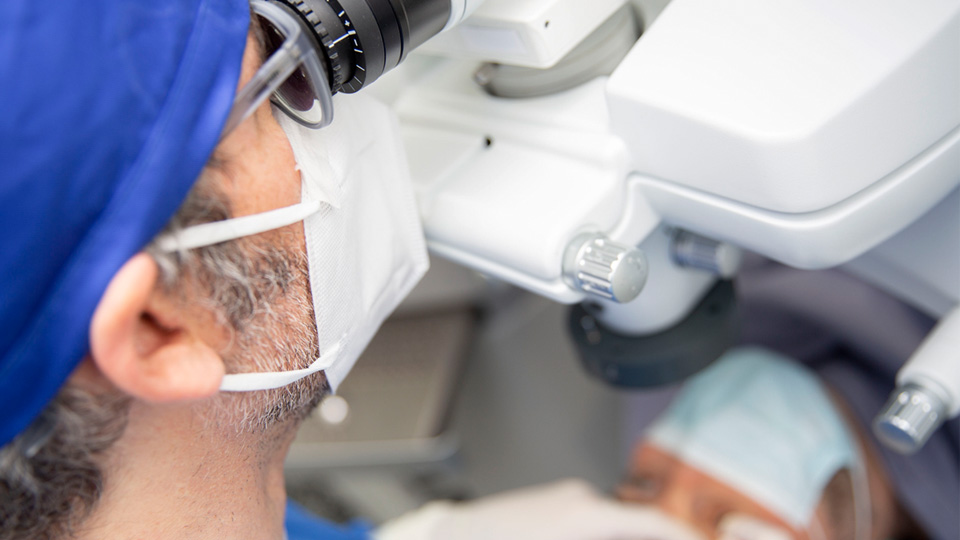Vitreoretinal complications in high myopia
09/01/2026

14/11/2022
Presbyopia also known as tired eyes is the gradual loss of the capacity to focus on objects up close. It appears physiologically among all people from the age of around 40, when the eye’s natural lens, the crystalline lens, starts to lose its elasticity, it becomes more rigid and it is not flexible enough to change shape and focus on images up close, making it difficult to accommodate the vision.
We will all suffer from presbyopia, to greater or smaller extent, depending on our prescription. Short-sighted people usually develop it later in life, while it usually starts before that in long-sighted people. Although it is absolutely normal and does not pose any risk, the onset of presbyopia is usually uncomfortable and may decrease the quality of life of some patients.
The main symptoms are:
Difficulty focussing on objects up close
Need to move objects away from us to see them more clearly
Feeling like text is moving, letters are blurry, and visual fatigue
Headache when you look at close objects for a long time
Red eye, dryness, stinging and a gritty feeling when you use your near vision for a long time
Treating Presbyopia
Therapeutic options for correcting presbyopia are personalised. They require an exhaustive study to specify the most appropriate treatment for each person, since we currently have a large range of options:
Glasses. There are many types:
Bifocal lenses: They combine near sight and far sight.
Occupational lenses: They help us to see at a medium distance (computer) and short distance.
Progressive lenses: The prescription changes gradually to correct far, intermediate and near sight.
Bifocal and multifocal contact lenses which have to be adapted individually for each patient.
Laser techniques.
Surgery to implant a precrystalline intraocular lens between the iris and the crystalline lens (phakic: the crystalline lens remains intact).
Clear crystalline lens surgery also known as presbyopia surgery or premature cataract surgery. In this option, an intraocular lens is implanted inside the crystalline lens to replace it and avoid a cataract operation in the future.
Concerning the surgical options, in addition to undertaking an exhaustive preoperative examination and working with the widest range of lenses for maximum personalisation, we offer differentiating features that reduce the risk and optimise the results.
In the intraocular lens surgery:
We operate on the presbyopic eyes separately because if there's an error in the first procedure then we have a margin to make changes before the second. Operating on both eyes at the same time with anaesthetic drops may be a good option since it requires less surgical investment and shortens the postoperative period. However, this option has significant disadvantages because operating on both eyes at the same time does not give us this margin for error.
We prefer to use a local and non-topical anaesthesia, since it leaves the structure of the eye completely obstructed, although it involves a higher cost and more surgical organisation as an anaesthetist needs to be present throughout the surgery. Only in this way can we provide maximum comfort and a much more relaxed experience for the patient, who will not feel any pain and will not have to cooperate in the intervention. On the other hand, topical anaesthesia or anaesthetic drops require the patient's cooperation the procedure, as they have to look into the light and try to stay still with one eye that is not completely obstructed.
Todos sufriremos la aparición de la presbicia o vista cansada a partir de los 40 años. Aunque su progresión suele resultar incómoda, actualmente disponemos de un amplio abanico terapéutico para que el paciente pueda afrontar esta etapa sin renunciar a su calidad de vida. ¿Qué es la presbicia? ¿Cómo es su tratamiento? ¿De verdad vale la pena operarse? Despejamos todas las dudas.